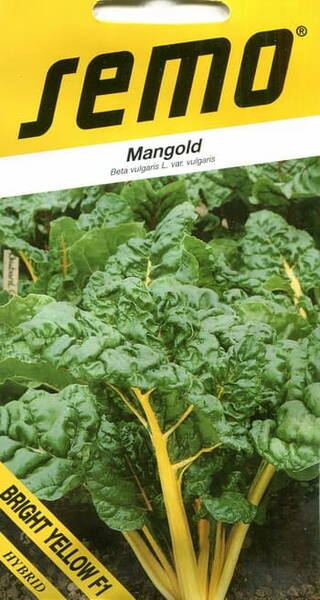Black Friday!
Discount on all products -23% only November 28-30!
Ex Tax: 34.33€
1,0 g = 50 seeds.
* Growing chard.
In warmer European countries, Swiss chard is considered a biennial plant, but in our cool climate, it is grown once a year. This is due to too cold winters, when the plant is not able to withstand low temperatures (although chard is able to tolerate relatively mild winters).
The cultivation of this vegetable greenery in greenhouses and hotbeds is also not prohibited. In autumn, you should also prepare the soil in the garden in advance. To do this, it is fertilized with humus for the whole winter.
1. In the soil with a temperature of about + 4 ° C, vegetable seeds are sown in late autumn. As a rule, this is done in wooden boxes with soil. Before planting seeds, they must be held for 2 hours in a manganese solution.
2. After 14 days, the first shoots begin. It is necessary to sow the plant in fertile soil, then the leaf beet will turn out juicy and tasty. If you leave the seeds to germinate in heavy, sandy soil, the chard will grow tasteless.
3. During the winter, seedlings should be watered frequently, and in early May they are planted in the ground. When planting, shady places should be avoided, as then the plant will slow down its growth.
4. Plants are planted at a distance of 25 cm from each other. Also, each time it is necessary to change the place where the vegetable is planted, since in the old place there may be pests that hunt for succulent leaves and beet stalks. Gardeners recommend planting chard in a place where tomatoes, cucumbers, beans, carrots or potatoes were previously planted.
5. Just planted seedlings should be watered with a solution of lime at the rate of 1 cup per 10 liters of water. Do not forget about abundant watering. If you do not follow the water regime, then the leaves of the chard will turn out to be hard. When germinating seedlings, do not forget about thinning the rows of chard.
6. To increase the yield of chard, the soil in the garden must be constantly loosened, thus supplying oxygen to the roots of the plant.
7. Periodically it is necessary to carry out weeding, destroying weeds, which, among other things, can be causative agents of fungal diseases of beets. Peduncles should be broken out.
8. When the plants form a powerful rosette of 6 leaves, and this is around July-August, you can start harvesting.
Chard is very fond of various organic top dressings. However, do not forget that this plant easily absorbs nitrates, so top dressing is carried out in certain doses. Humus, mineral and green fertilizers are suitable for fertilizing chard.
Cleaning and storage of chard.
1. After planting in May, leafy chard varieties are ready for harvesting already 2.5 months after planting the seedlings in the ground, petioles - after 3 months (leaf height should be about 25 cm).
2. Carefully cut out large leaves along with petioles with a knife. The procedure is done very carefully so as not to stain or damage the leaves. On average, from one bed 1 meter long, you can harvest 1 kg of crop.
3. Only cut leaves of the plant should be used immediately after cutting or stored in the refrigerator for no more than 2 days.
4. If you want to keep the tops of the chard for a longer period, then it is enough to leave it in wet sand for the winter.
5. New leaves may grow again until October, and then the roots of the plants must be removed completely.
When grown properly, chard produces a powerful rosette, forked root, and many leaves. If the plant still survived the winter, then in the second year it forms long stems with flowers and seeds.
The stems and leaves are edible in chard, the roots are tasteless and not suitable for consumption. It is very important to plant seedlings and seeds in a well-lit place, as well as thin out the rows of chard in a timely manner (when the plant reaches a height of 3 cm). If this is not done, then the chard will slow down its growth and development, and its yield will also be reduced. The average distance between leaf beet seedlings should be 8 cm.
A plant with abundant watering will always have voluminous and juicy leaves. The quality and taste of chard is also affected by the level of soil acidity, since chard does not like sour things very much.
Eng.: Swiss Chard (Spinach Beet). Suom.: Lehtimangoldi. Sven.: Mangold.













